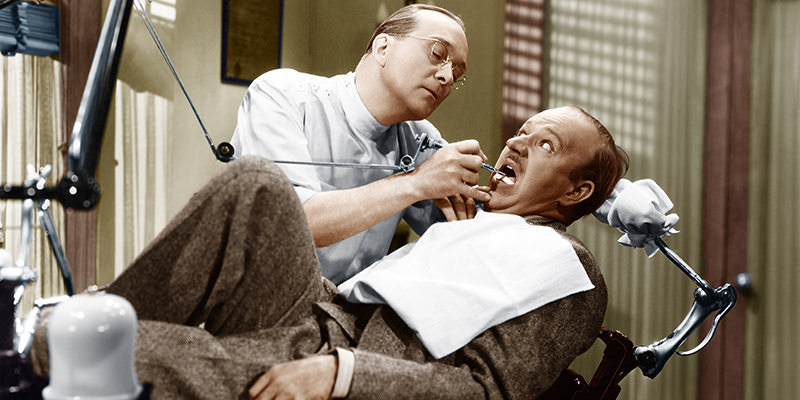Maybe you’ve seen it, maybe you haven’t—the clinically somber commercial where the “dentist” talks about the effects of acid erosion on your teeth, complete with a too-huge X-ray showing the lonely shadows where enamel used to be. The culprits: acidic drinks. Things like OJ, soda, and yes, wine.
Actually, if you look up “causes of acid erosion on teeth,” there are a lot more potential culprits—and some commercially interested parties (ahem, Pronamel) are more than happy to let you know that anything from black olives to probiotic yogurt to barley (yes, barley) can cause acid erosion. Since we can’t possibly cut barley and olives from our lives at the same time, or dishonor Jamie Lee Curtis by avoiding probiotic yogurt, we’ll tackle wine first.
If you’ve been drinking wine for even a little while, you probably know every glass has some level of acidity. It’s one of the key components of a wine; integral, in the right proportion, to creating a balanced product. Any combination of tartaric, malic, lactic, citric, acetic, and succinic acids will contribute to a wine’s final body and acidity, though tartaric and malic account for the majority of acidity in a wine (and malic acid can be converted into smoother lactic acid by way of malolactic fermentation). But whether you’re drinking a super dry Vinho Verde or an inky purple Cabernet, there’s acid in the glass.
That acid, unfortunately, likes to eat away at enamel, a calcified, mineral-rich substance that basically forms a thin shell covering the teeth. Despite the fact that enamel is actually “the hardest tissue in the human body,” it’s still susceptible to erosion. Under normal (non-erosion circumstances) the pH in your mouth should be between 6.2 to 7. Erosion, or “enamel demineralization,” starts when that level falls below 5.7. Most wines have a pH between 2.9 and 3.5, give or take, meaning a swig of red or white wine can plummet your pH and erode enamel. Once gone, as our depressing dentist likes to remind us, our enamel isn’t coming back (and yes, Adele will probably write a song about it).
There is some good news. Some wines are better than others: lower acid wines, clearly, and also still wines. Carbonation actually increases acidity, so anything from carbonated water to soda (even diet) to, alas, Champagne will be harsher on your teeth than a still drink. And unless you’re a professional taster, chances are you’re not holding wine in your mouth for any significant amount of time—though, to be fair, even casual wine drinkers aren’t knocking the stuff back like Jaeger. Your best bet is to sip water between sips of wine, not necessary on a one-to-one ratio, but intermittently. This’ll wash away some of the wine and also dilute the acidity level in your mouth, bringing the pH back up to non-erosive levels. (Hooray!)
As for brushing your teeth, do it—but just like swimming, wait an hour after you’ve had a glass of wine before you brush your teeth. Not that you’ll get a cramp (does that really happen?) but you shouldn’t just go straight from Cabernet to Crest. Your enamel may have been softened and your bristles and/or drunken brushing technique won’t do it any favors. Drink some water, wait patiently, maybe floss.
In truth, at the end of the day, erosion seems to be a fact of life. Or a life lived, anyway. Anything from swimming (exposure to chlorine) to eating large amounts of barley—and who can stop me?—can lead to some enamel loss. If you want to keep drinking wine, that’s fine. Just keep drinking water and brushing regularly, as well as getting calcium and maybe avoiding Warheads Extreme Sours, which, while a delicious and thrilling candy, apparently have a pH level comparable to battery acid.

